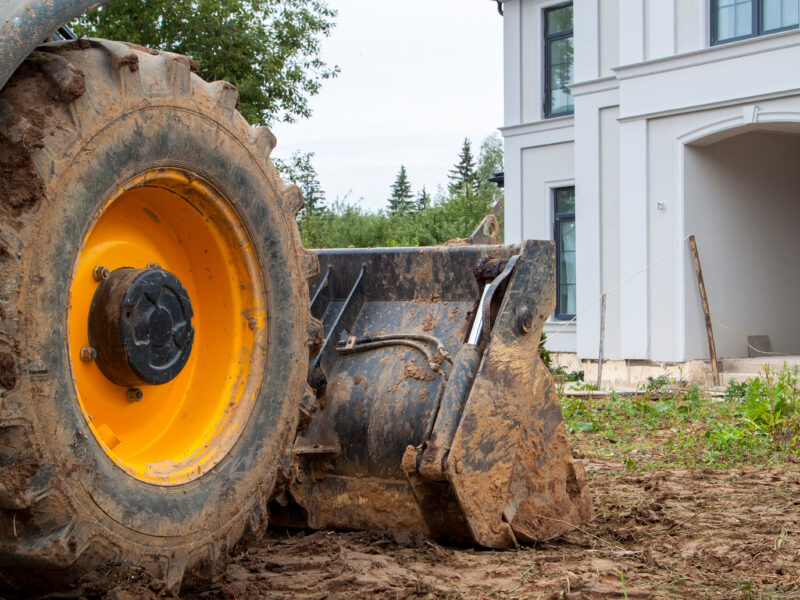

In an age when everyone is supposedly concerned about sustainability, there’s something about tearing down perfectly good houses — larger, distinguished houses along with irreplaceable historic houses — that is absolutely disgusting.
The fact that these houses are demolished and carted away in dumpsters to a landfill shows an unfortunate and willful indifference for the material resources embedded in these structures and for the environment as well.
Let’s forget for the moment the demolition of large-scale heritage properties like Henry Francis du Pont’s Chestertown House, Bayberry Land, the Bouwerie (on the National Register) and Four Fountains. All of these properties were part of Southampton’s architectural, social and cultural history. At the current time, however, even newer mansions, which replaced smaller homes as waterfront land grabs, won’t be around long enough to become part of history.
When a house like the 12,000-square-foot Sillerman mansion on Meadow Lane, built in 2010, is thrown in a dumpster to make way for a new mansion one can only imagine the price of its demolition. When I asked several builders what it would cost just to demolish the average 2,561 square foot house they said it can range anywhere from $30,000 to $50,000 predicated on site conditions, access, construction type, full basement or slab, etc. The concept of a linear economy, based on building using only new materials, is becoming unsustainable.
According to the EPA, the United States created 600 million tons of construction and demolition (C & D) debris in 2018. Municipal solid waste, 60 percent of which winds up in landfills, generates less than half that tonnage. Construction represents less than 10 percent of C & D debris generation while 90 percent comes from demolition.
Demolition is a relatively new method for disposing of buildings. Prior to World War II, deconstruction from the top down was the primary method used for razing a building, which is the reverse of how we build from the bottom up. With the introduction of bulldozers in the European theater during the war, debris from bombings could be disposed of easily. These earth-moving machines ushered in urban renewal in the states after the war with demolition of whole neighborhoods consequently paving the way for new highways. The bulldozer has remained the dominant tool for debris disposal ever since.
Today, the movement for deconstruction is becoming popular, and it’s happening all over the country. There are always buildings that simply cannot be saved for a variety of reasons, and while deconstruction is the alternative to demolition it’s not an alternative to preservation. Deconstruction involves the systematic disassembling of a building with the goal of retaining as much material as possible for reuse with as little as possible going to landfills. This encompasses nonstructural salvage items like mantels, casings, moldings, corbels, windows and other decorative finish items. There are also structural items like columns, bricks from lime mortared walls, framing lumber, sheathing planks, beams, wood siding and flooring that can be removed so the building becomes as close as possible to an empty lot. Heritage building materials are finite and irreplaceable but they can be repurposed to solve the need for in-kind availability. Additionally, saving materials also saves embodied carbon. By diverting these materials from the landfill a local supply chain is created and it becomes part of a circular economy.
At present there are no professional qualification standards for historic tradespeople. There is training available across the country. Preservation Maryland has a program, established in 1977 through the National Park Service for apprenticeships in reconstruction and deconstruction, which leads to career paths with greater employee retention.
In the San Antonio Office of Historic Preservation a policy initiative has been in the works since 2018 for a Deconstruction & Circular Economy Program. The department uses this analogy to frame their policy for deconstruction: “Like an organ donor, a structure may have reached the end of its life, but its parts and pieces could help extend the lives of dozens of other local structures.”
This ambitious program focuses on a reuse economy, one where salvage would be a priority for repair, recycling and jobs for trades. Local material banks to repair homes affordably have been proposed as well as neighborhood networks of exchange. Local economic prosperity, the retention of cultural heritage and reduced landfill emissions are all part of this equation. The priorities are to support affordable housing repair and production by increasing access to affordable materials, increasing the local pool of tradespeople to make costs more competitive, pushing the circular economy via reused building materials, growing local salvage industries, upcycling, and value-added manufacturing (taking a recycled material and turning it into something else altogether). All of these priorities are interrelated to the workforce, public health, sustainability and heritage.
This deconstruction program will apply to all buildings, both historic and nonhistoric. With close to 600 demolitions in the city each year there will be a three-phased, mandatory deconstruction requirement on single- and multi-family units and accessory structures over the next three years based on construction dates starting up to 1920 and then to 1960, which would apply to 60 percent of all demolition permits. The vote by the City Council on adopting this program takes place in September and the planners are optimistic for its passage.
With the orgy of new construction, renovations and demolitions on the East End going unabated and generating unbridled waste it might well be time to consider deconstruction as a means to better stewardship of our built environment as well creating a sustainable, circular economy.
 More Posts from Anne Surchin
More Posts from Anne Surchin